|
|
| home | exhibitions | interviews | features | profiles | webprojects | archive |
|
Marie Yates on St Ives, John Latham, conceptual art and feminism Like Bob Law, Derek Guthrie, Tony Shiels and Monica Sjoo, Marie Yates is one of a number of artists who were an integral part of the post-war St Ives colony, but who achieved their best work only after leaving it.
I ended up at the Town Hall Tavern in
Albert Square drinking with the Peterloo Group who were regularly
collecting and sending money to the artists and writers in St.Ives. The
people I remember in the Group were Robin Skelton, Jack Marriott, Laurie
Whitfield, George Cooper. As a result of the Peterloo/St.Ives connection
I made several visits to St.Ives from Manchester hanging around with the
Vancouver Beatniks and the Zen poets, and I loved it there, it had its
own atmosphere, but I particularly loved the landscape. Also I witnessed
the ongoing war between the beats and the locals, and how hair just kept
getting longer!
Peter Redgrove, the poet, spent
a lot of time sitting in my kitchen and John and Maggie Antrobus, Benny
Siroto, Michael Tyzack and Alan Wood were friends and supporters, and
many more. Denis Mitchell was of particular help to me - taking photos
of my work and advising me generally. I had the luck to meet some
amazing people like Herbert Read and Naum Gabo.
I did not know Monica, and in fact never came across her. But Radical (or Essentialist) Feminism was not my thing. I was aware of Tony and Bob and followed what they were doing, as I was involved in something similar, but they were men and really only supported each other. Women were another story for that generation.
In 1968 you enrolled on the Fine Art BA at Hornsey College of Art – presumably starting there just after the famous protests and sit-ins. How did you move away from the painterly aesthetic of St Ives towards a more conceptual way of working? The sit-ins and protests were still going
on in September 1968 when I arrived and the hostilities lasted another
two years or so between staff/management and some staff/students. And
still to this day there are some leftover blacklists. I became rapidly
and permanently politicised at Hornsey, for which I will be forever
extremely grateful. Can you relate this to your perception of how conceptual art emerged in the UK, in general? David Tremlett in his interview emphasised the importance of Fluxus, for example... I was never really into Fluxus, but met some of its members and interesting foreign artists arriving in London at that time, like Liliane Ljin (who was involved in Fluxus), she was teaching at Hornsey and befriended me and got me to send to the 'John Player Biennale' of 1970 where there were some interesting young people showing. That was quite an important show for me to participate within. I cannot
really remember enough to describe the emergence of concept art in the
UK, except that the 'When Attitudes Become Form' exhibition was probably
mainly the main mover on the whole and was very exciting for me
personally. I noticed that the ratio of men to women was 64 to three
though, maddeningly. I liked the work of Victor Burgin, Joseph Kosuth,
Sol LeWitt, Lawrence Weiner, Eva Hesse, Art & Language and John Latham. Talking of John Latham, you exhibited with his Artist Placement Group at the Hayward in 1971. Can you say something about this and about your involvement with John and his wife Barbara? I met Barbara Latham at Hornsey Fine Art (Alexandra Palace) in the first term, as she was standing in for John, who was banned from teaching for his part in the sit-in. She invited me to their meetings and I met John there at their office, and got involved with their work. John talked to me a lot, told me stories and generally educated me about the art world that I had missed out on in St.Ives. As a result of my participation in the APG activities, in 1969 I set up a provisional Placement of my own at Brunel University through the Psychology department with the help of Steven Mendoza and Parveen Adams, where I made ironic studies of the environment of the campus and its effect on the inhabitants and their respones to it. The University allowed me to set up an exhibition of this work on the campus in 1970, and this formed the basis of my presentation at the INNO 70 exhibition at the Hayward in 1971. I became a friend of the Latham family and when preparing for my degree show, in early 1971 was offered the use of their retreat on Dartmoor for a weekend, and from where I proceeded to develop my first landscape works.
I never described my landscape pieces as Land Art which represented for me mostly a sort of minimalist production that seemed to be about power and mastery. It was heavily funded, and mainly produced by important white male artists, even in the UK. In its reliance on a limited number of recurring forms, their works might be regarded as remaining quite silent about the infinitely long relationship between humanity and the land. They tended to focus on landscapes presented in such a way as though nobody had ever been there before. Besides that, my works were very temporary disturbances, hardly there at all, and were attempts to question the uses of landscape in art and the media and the covering over and obliteration of the historical remnants of centuries of human struggle. To me landscape is a huge memory to be read and valued, and I treasured the finding of small pockets which resonated with shadows of the past - a bit Hardyesque in the early days. But to understand my eventual relationship to Land Art in depth, you need to refer to my Bookwork published in 1978 by the Robert Self Gallery entitled " A Re-Evaluation of a Proposed Publication" which is both a self-critique and a critique of Land Art in general.
How did you choose the sites that you travelled to? I say this because some of them are what might be called 'sacred sites'... The sacred was not something that I was very much attached to, not being religious, and not admiring mystery as a form of power. I was fascinated by the old footpaths and ancient roads which could/can still be found criss-crossing vast empty spaces, speaking of the countless and never-ending ways we have continuously journeyed about our world, and finding some of the ancient destinations was enthralling. I chose the sites mainly because of old footpaths, or they found me.
David Toop, the writer and musician, accompanied you on many of these trips (eg photo right). Were you in a relationship? How did music or sound feature as part of these works? Yes, we were in a relationship as you put it, a rather intense one that lasted for several years. His role initially was to keep me company on the earlier versions of my windswept wanderings. To keep himself going he would experiment with making sounds out of almost anything whilst I worked, and he always had his flute with him. I sort of got used to his activities, as a background noise to my own, though they were never planned or proposed by me, and I guess they can be seen now as unplanned intrusions, but they sometimes got netted in my documentations at first quite accidentally. I would be busily taking a photograph and he would unknowingly move into view, and perhaps unwisely I just carried on, the same with my audio recordings. They should have been treated as interruptions, but they were not, and once or twice I would wait for him to move into or out of frame too, but none of it was planned. Persons were not mentioned in my records - the texts - only the actions and events of the place itself which was the real and important subject of the work in those early landscape pieces. I never played the flute or any instrument or made any sound myself whatsoever. The ambient audio recordings were only ever intended to be of the place itself and at that one time. Also I have never appeared in any of my photographs utterly deliberately, being the record keeper/author/observer on the outside.
As I said earlier - the big change came at Hornsey in 1969 with the appearance of the Italian Art Povera movement. I had also begun to take part in discussions about the role of art within society. Through using temporary minimalist installation work involving soft fabric forms, neon light and wind/air, in which the minimalist photographic documentation was often the work itself, it posed questions about art, though not without critical detractors. However, the inequalities remained an unspoken problem. During this time I was strongly influenced by the writings of Lucy R. Lippard.
By 1977 I had wanted to get to the root of my captivation by the
landscape, and started to read and study seriously. I attended
University College and read Social Anthropology and then moved on to
political theory, cultural studies and psychoanalysis, and finally
arrived at feminism in 1979. I presented a lot of one-off art school
seminars at that time and the discussions there were useful.
In 1977 I started working in more throwaway materials - photocopies etc, and began to adulterate the precious photograph with text. The questioning of values became more intense and I started to bring ideas and theories directly into the work. Around 1978 I became extremely engrossed in the works of Mary Kelly who I met at University College and Laura Mulvey at The Filmmakers Coop, and entered wholeheartedly into the women's movement in art, and debates on the role of the media in society.
In 1979 I single-handedly organised a weekend conference at
Dartington Hall on 'Art, Politics, and Ideology' and invited Victor
Burgin, Griselda Pollock, Mary Kelly, Margaret Harrison, Peter
Fuller and others as speakers to it. Also in 1979 I responded to an
invitation from Lucy R. Lippard to take part in the exhibition
ISSUE: Social Strategies by Women Artists at the Institute of
Contemporary Art in London in 1980 with a project constructed
specially, entitled 'Image/woman/text' (after Roland Barthes), which
explored social preconceptions about photographic images of women,
the way those preconceptions are made, and the meanings constructed
accordingly (picture above left).
Following on from this came my long-term installation project on the power of the image in the construction of identification and sexuality: 'The Missing Woman 1982', and then further, a major project dealing with desire and separation in the process of a daughter mourning a mother: 'The Only Woman 1985', negotiating the interface between the social and the psychic (below right). Between 1985 and the present many works have been constructed following on from the initial credo of 'the personal is political'. Many have not been exhibited widely. Most recently, from a position of exile in Greece, using video, installation, image and text, I have turned to the question of exile and belonging, and of the impossibility of returning home, all of which are now the condition of so many. This project is entitled 'On Not Going Home'
In an article, Feminist Art, written by Mary Kelly and myself for Studio International in 1980, we stated that: “In the 1970s we saw the rise of the ‘women's artists movement. It was stylistically and strategically heterogeneous but nevertheless recognisable as a consistent attempt to give a positive place to the work of women artists within the art world and the world at large. Until the Whitney Museum was picketed and threatened with Human Rights legislation in 1970, very few, if any, women artists were included in major public exhibitions of contemporary art. As a direct result of this action, the Whitney raised its quota of women by 20% and this indirectly affected later events such as the Paris Biennale 1975, which included 25 women, and the Hayward Annual 1978, where all the organisers and a majority of the exhibitors were women”.
You've mentioned Lucy Lippard, who championed conceptual art in the late 60's at a time when it when it was still very male-dominated. What was her particular role in relation to Feminist Art as you remember it? Lucy was very supportive. 'From The Centre' was published in 1976, and her exhibition 'Art from the British Left', which took place at Artists Space, New York (16 June–14 July 1979) included four women out of seven artists (myself included)—an exceptional ratio for the time. The work by Kelly, Harrison, Hunter, and Yates included in 'British Art from the Left' was then sent on by Lippard to Chicago, to be shown in the last exhibition held at the Artemisia Gallery, which she also selected, entitled 'Both Sides Now: An International Exhibition Integrating Feminism and Leftist Politics' (1979). Then in 1980 came her show 'ISSUE' at the ICA, which I've already touched on. See the following note from the ICA records:
ISSUE - ICA LONDON
Marie Yates 'Some dimensions of my lunch: Conceptual Art in Britain' was at Richard Saltoun, London (see exhibitions and webprojects). |
|
|

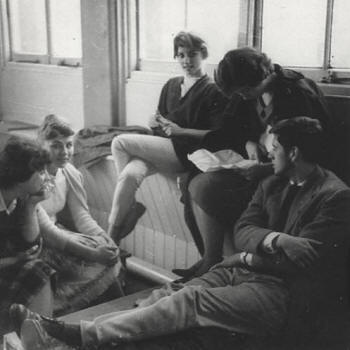
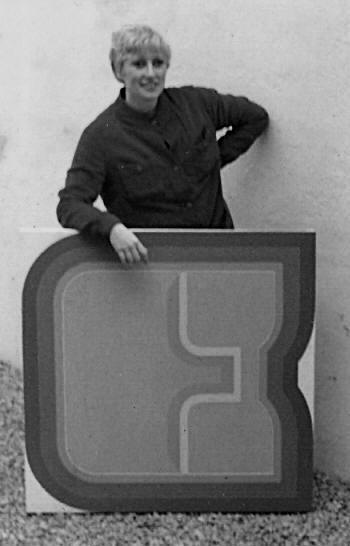
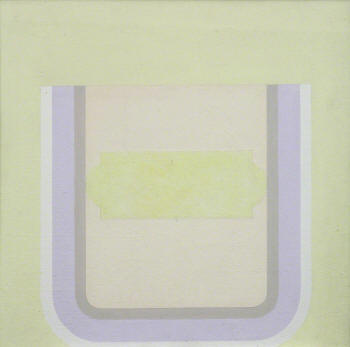
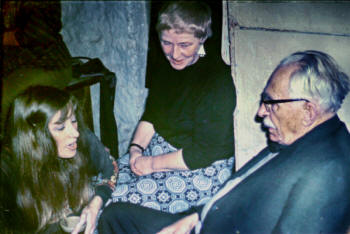
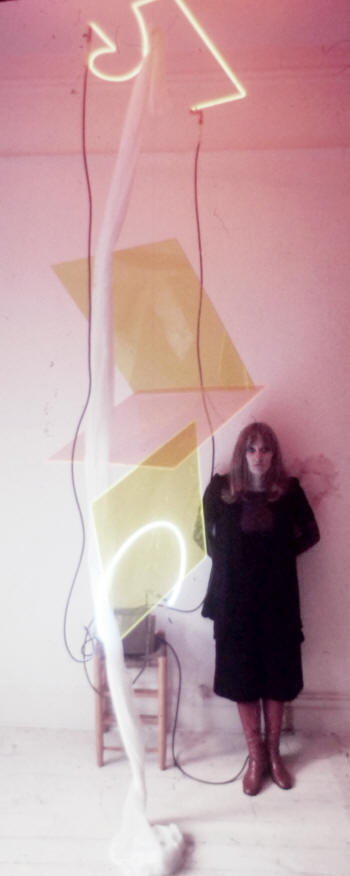
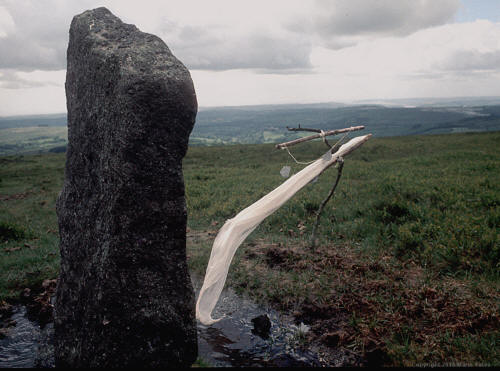 How
would you describe the 'Field Workings' series - shown in your solo
exhibition at the Arnolfini in 1973? Do you think of them as Land Art,
and if not why not?
How
would you describe the 'Field Workings' series - shown in your solo
exhibition at the Arnolfini in 1973? Do you think of them as Land Art,
and if not why not?
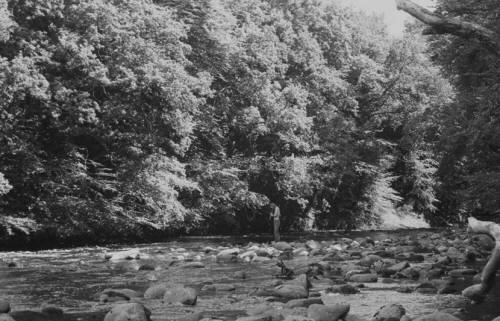
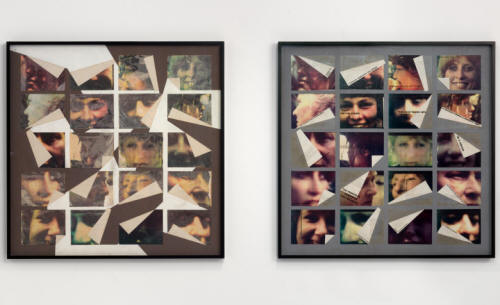
_small.jpeg)